Gopher Spurge, Rigid Spurge, or Upright Myrtle Spurge (Euphorbia rigida) is a hardy perennial belonging to the Euphorbiaceae family. Native to Southern Europe and Western Asia, this plant is admired for its striking appearance and unique growth habits. Its blue-green leaves form tight, spiral patterns, creating a striking visual effect. Topping these spirals are clusters of vibrant flowers that range in color from bright green to yellow with red edges, adding bold contrast to any garden.
Though visually captivating, Upright Myrtle Spurge requires careful handling. The plant’s milky sap can irritate the skin, and it is toxic if ingested, making it essential to use caution around pets and children. Despite these precautions, this perennial is a popular choice for gardeners seeking low-maintenance, drought-tolerant plants that bring texture and color to their landscapes.
| Common name | Gopher Spurge, Rigid Spurge, Upright Myrtle Spurge |
| Botanical name | Euphorbia rigida |
| Family | Euphorbiaceae |
| Species | rigida |
| Origin | South Europe and Western Asia |
| Life cycle | Perennial |
| Plant type | Perennial |
| Hardiness zone | 7, 8, 9, 10 |
| Sunlight | Full Sun |
| Maintenance | Low |
| Soil condition | Clay |
| Soil ph | Acid |
| Drainage | Well-Drained |
| Growth rate | Medium |
| Spacing | 3 ft. – 6 ft. |
| Flowering period | Spring |
| Height | 1 ft. – 2 ft. |
| Flower color | Gold, Yellow |
| Leaf color | Blue |
| Stem color | Green |
| Fruit type | Capsule |
| Leaf benefit | Showy |
| Flower benefit | Showy |
| Garden style | Drought Tolerant Garden |
| Uses | Coastal |
I. Appearance and Characteristics
Euphorbia rigida, the gopher spurge or upright myrtle spurge, is a species of flowering plant in the spurge family Euphorbiaceae, native to southern Europe and southwest Asia. Growing to 50 cm (20 in) tall and broad, it is a bushy evergreen perennial with somewhat fleshy leaves arranged in a spiral, bearing bunches of bright yellow flowers in late Spring.
As with others of the genus, all parts of the plant are toxic if eaten. When cut or broken, the wounds leak a milky sap which can cause skin irritation.
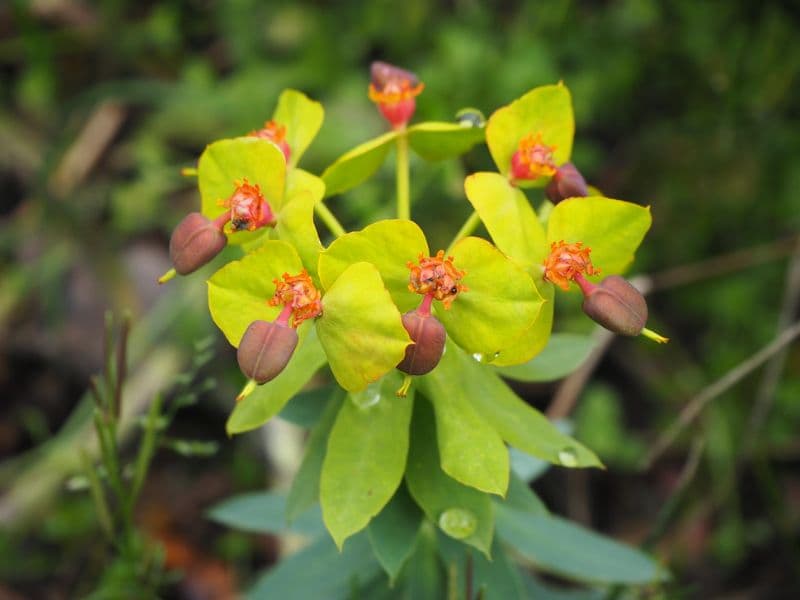
In its native Mediterranean Basin and the Middle East it is considered a weed. It has appeared spontaneously in the California wilderness but is not considered a noxious weed.
It performs best in well-drained soil in the sun or light shade. It has gained the Royal Horticultural Society’s Award of Garden Merit.
II. How to Grow and Care
Sunlight
Spurges naturally grow in places that have plenty of sunlight, but some species can tolerate partial shade (e. g., Euphorbia amygdaloides var. robbiae). Full sun provides the best environment for spurges. If they are grown indoors, spurges need at least 6-8 hours of direct sunlight every day for proper development.
Temperature
Genus Euphorbia is very large and diverse, so its different species can be found in various habitats, but the majority are well-adapted to a temperature range of -29 to 4 ℃. Many spurges, in spite of having succulent leaves, cannot handle long periods without moisture and need to be watered weekly during hot summer days. Some cactus-like species are well adapted to high temperatures and prolonged dry periods, but most species used for landscaping and decorative gardening require more moisture for proper development.
Watering
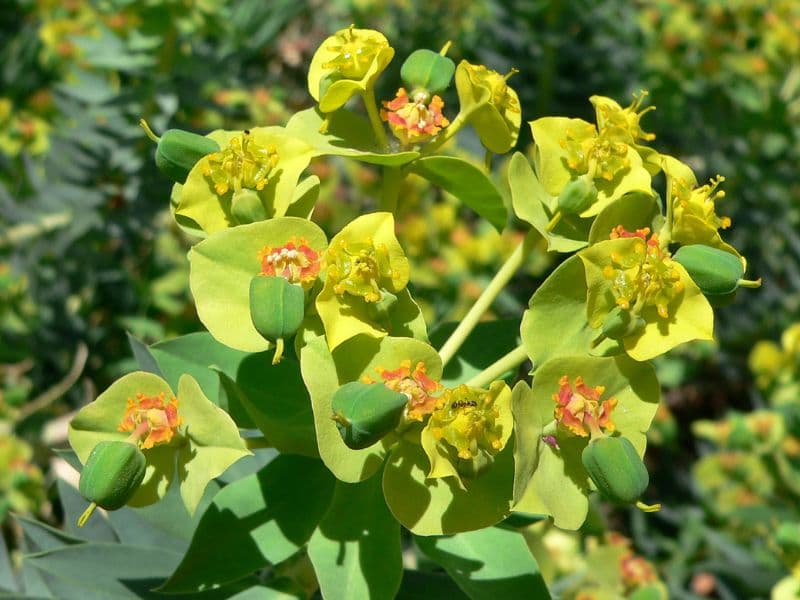
Native to the Mediterranean, upright myrtle spurge thrives in dry, rocky soils where it has adapted to conserve water efficiently. This species is drought-tolerant and prefers a drier climate with less frequent watering, maintaining a balance between hydration and its arid origins. Watering every week will suffice for this hardy plant. As an evergreen perennial, upright myrtle spurge retains its foliage year-round, making it a low-maintenance choice for both indoor and outdoor settings that require minimal supplemental watering.
Soil
Spurges aren’t picky when it comes to soil type. They can grow in a variety of soils. Some species of Euphorbia can even thrive in nutrient-poor soils, requiring only that the soil be well drained. If the soil is full of moisture and is prone to water retention, it will most likely cause root rot.
Fertilizing
For upright myrtle spurge, a balanced nutrition fertilizer is ideal during active growth, while high phosphorus fertilizers enhance blooming. Fertilize bi-monthly in growing seasons and reduce in dormancy. Use recommended label quantities to boost vigor and flower production. Avoid over-fertilization to prevent root burn. During cooler months, withhold fertilizing as growth slows. Use granular or liquid forms and water thoroughly post-application. Ideal for gardeners of all levels seeking to maintain upright myrtle spurge’s robustness.
Planting Instructions
Dig a hole twice as wide as the plant’s root ball before planting. Then, turn the container with upright myrtle spurge upside down and let the plant slowly fall into your hands. Place the plant upright in the hole and slowly fill in around the roots with loose and fertile potting mixture, adjusting the planting depth until it is just right. Water it once. Do not overwater, as standing water is not good for the plant.
Pruning
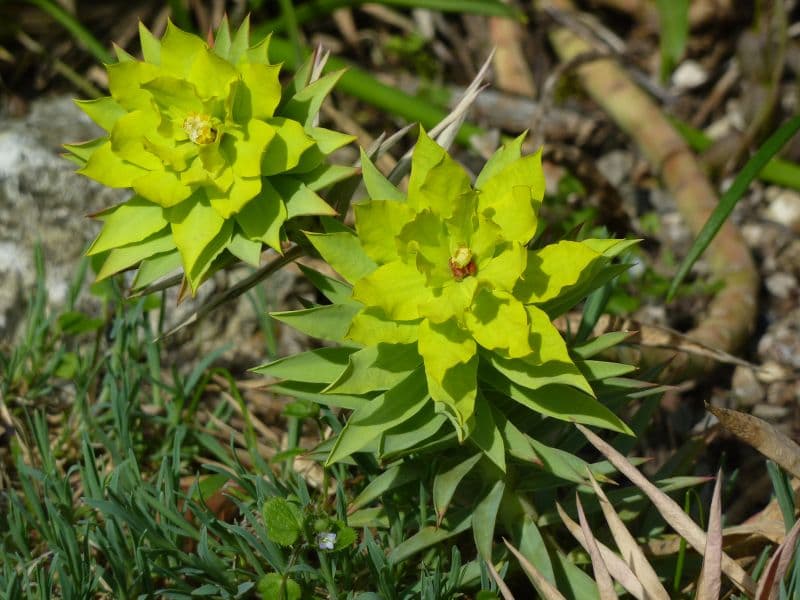
In early spring, if there are any damaged stems, they need to be removed to keep the plants healthy and to optimize their nutrient management. It is advised to cut back a certain number of stems after blooming in order to stimulate consistent flowering and growth of new foliage. When cutting a stem, cut at the stem’s base. It is very important to use gloves while handling and pruning upright myrtle spurge, because their tissues contain milky-white latex sap which is poisonous and can irritate the skin.
Propagation
Upright myrtle spurge can be successfully grown from seeds, but the seeds are rarely commercially available because they are difficult to germinate and stay viable only for a short period of time. Upright myrtle spurge is most commonly propagated via cuttings.
It is important to wear gloves while working with upright myrtle spurge cuttings and to clean the pruning shears thoroughly after pruning, so that any unwanted contact with the sap is avoided. Before planting, it is necessary to leave the cuttings to dry for 2-3 days. This will prevent rot from developing and enable proper formation of the callus tissue. It is advised to plant the cuttings in a soilless medium, such as peat moss, because it provides an optimal environment for proper root development.
Cuttings should be misted regularly, and the pots in which they are planted need to be wrapped in either foil or a plastic bag to preserve moisture. The bag or foil needs to be removed for two hours each day to provide sufficient air and to prevent excess moisture in the medium. If this step is skipped, molds and rots can easily develop and damage the health of the young, sensitive cuttings. When the cuttings develop a root system, they are ready to be transplanted into soil.
Transplanting
The optimal time to transplant upright myrtle spurge is during S1, the cooler months of spring/fall, given its sensitivity to heat. Ideally located in well-drained soil, partial sun, and protected areas, upright myrtle spurge thrives best when not disturbed too frequently, so care while transplanting is essential.
Repotting
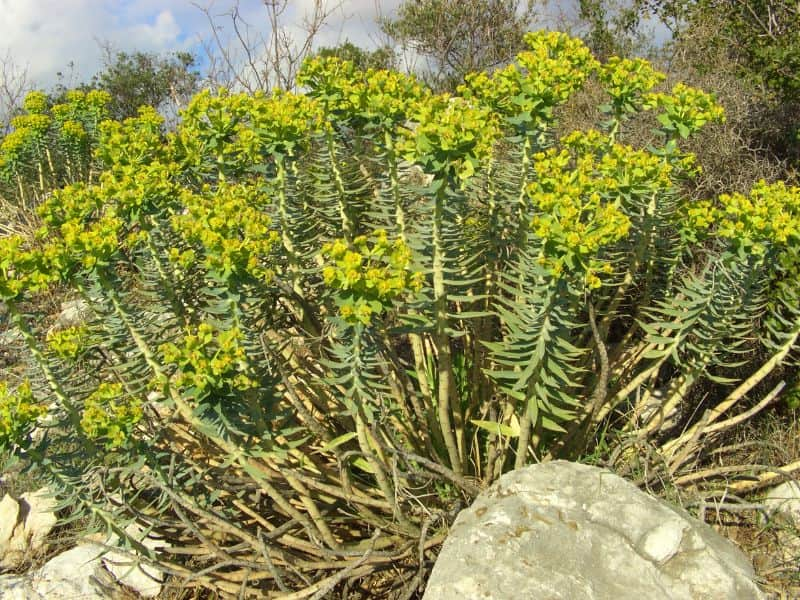
Repot upright myrtle spurge in early spring every 2-3 years to accommodate its moderate growth as a bushy shrub. Select a pot slightly larger than the previous, ensuring drainage. Post-repotting, keep upright myrtle spurge in bright light, avoiding overwatering. Its sap may irritate, so handle it with care. This will ensure upright myrtle spurge’s vibrant bloom and structural form are maintained.
Pests and Diseases
Common Pests
E. rigida repels deer and rodents, including – you guessed it – gophers, so there’s no need to fret over those pests.
There’s really just one type of insect pest that might attack your plant from time to time, though it’s usually found only on those that are stressed.
Red Spider Mites
Red spider mites (Tetranychus urticae) are common pests in dry, hot conditions. If they find and feed on your plant, you’ll see yellow stippling and fine webbing on the leaves. If you look closely, you’ll also see tiny red dots moving around the foliage.
To get rid of red mites, pour room-temperature water on your plant to knock them loose. Do this every few days until the infestation is gone.
Don’t do it for too long, though, or you’ll run the risk of drowning the roots or introducing disease.
Common Disease
If you’re growing your gopher plant in dry conditions and well-draining soil, you probably won’t ever have to deal with diseases. If it’s wet or poor draining soils, you might see the following:
- Powdery Mildew
Powdery mildew appears as small spots of white, powdery growths on the leaves.
It’s usually no more than a cosmetic issue, but severe cases can kill off some of the leaves and cause stunted growth.
Powdery mildew is caused by fungi in the Erysiphales family, which thrive in warm, dry weather on plants that are crowded or in too little light.
Systemic fungicides don’t work well because Euphorbias have periods where they don’t take up water, so they wouldn’t take up the fungicide either at that time. Topical treatments are best.
- Root Rot
Root rot in upright myrtle spurge is often the result of the roots drowning in too much water rather than being caused by a pathogen.
The roots turn mushy and black, and the top of the plant wilts, turns brown, and sags to the ground.
Once that happens, it can’t be saved. But if you catch it early, you can replant in a better area or change your watering schedule.
Occasionally, wet conditions can lead to an infection by fungi in the Fusarium genus.
This type of rot usually happens to specimens that are already stressed. It has the same symptoms whether or not it’s pathogenic, so it’s really hard to tell if it’s the fungus at work or the drowning roots that are causing the issue. Best to treat for both.
If the soil doesn’t drain well, the first step is to replant somewhere where it is. Next, prune out any brown foliage. Finally, treat with a fungicide that targets fusarium.
III. Uses and Benefits
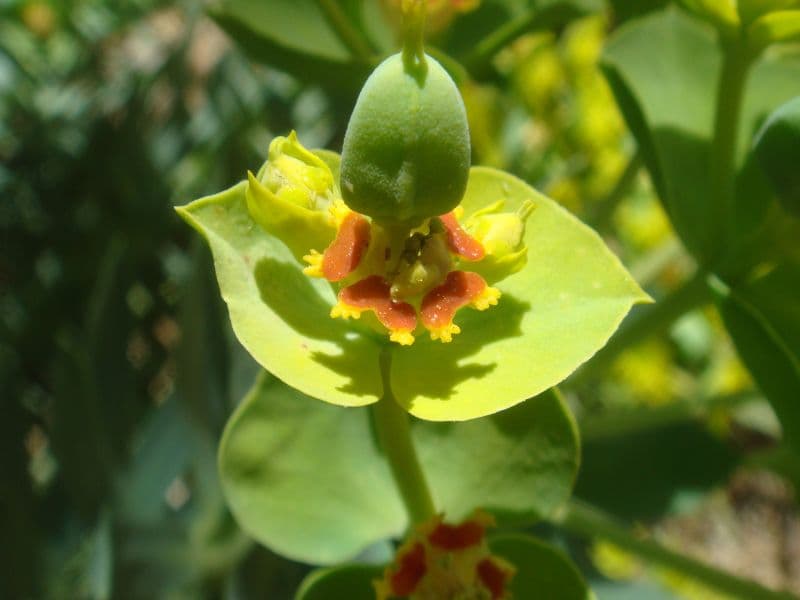
This plant is commonly used as an ornamental in temperate gardens of Europe and North America, where it is valued as a relatively trouble-free specimen for drought-resistant and low-maintenance situations. It is especially useful for underplanting larger shrubs such as roses.
IV. Harvesting and Storage
Some species of Euphorbia can be cut for fresh flowers or foliage, such as snow-on-the-mountain (Euphorbia marginata), Euphorbia fulgens and Euphorbiaformosana. When harvesting cuttings, remember to wear gloves, as the sap can be irritating to the skin. It can be cut from the base of the stem. Soak the end of the cutting in hot water for 10 seconds to stop the milky sap from oozing. The vase life of for the cutting will be about 5-7 days, and some flower food can extend its life.
When the fruits of Euphorbia plants are ripe, they burst and scatter the seeds over a large surface area. In order to harvest all the seeds, the individual fruits or the entire plant must be wrapped in in nylon, gauze, or similar material before the ripe fruit bursts and releases the seeds.
Find Where to Buy the Best Upright Myrtle Spurge (Euphorbia rigida)
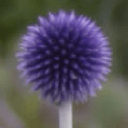

















Leave a Reply